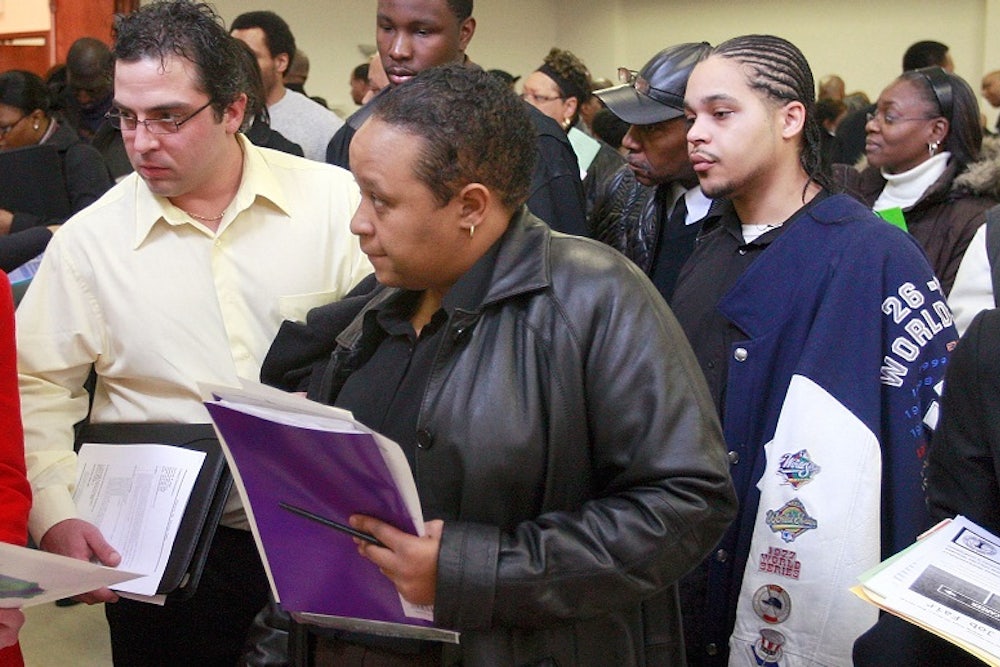Many economists cheered the May jobs report on Friday as it showed an economy continuing to strengthen. But despite the positive economic indicator, one group is still struggling more than all the others: the long-term unemployed.
These workers have been jobless for more than 27 weeks. Employers systematically discriminate against them. Early evidence shows that they have trouble finding work even as the economy recovers. On Monday, Gallup released a new survey that finds significantly higher rates of depression for the long-term unemployed:

Gallup also finds that the long-term unemployed spend less time with their family and friends, potentially contributing to those higher rates of depression. The survey notes that we cannot identify causality: “These results don't necessarily imply unemployment itself causes these differences. It may be that unhappy or less positive job seekers are less likely to be able to get jobs in the first place.” That’s true, but these findings are also consistent previous academic evidence.
If the economy continues to improve as economists expect, it’s important to remember the 3.4 million long-term unemployed Americans who are struggling to find work. We can start by renewing federal unemployment benefits. In December, unemployment insurance expired, leaving more than a million long-term unemployed Americans without a much-needed source of income. House Republicans have killed a Senate deal to renew the program and there seems to be little hope they will rethink their position.
But simply renewing UI will not be enough to significantly reduce the elevated depression rate and help the long-term unemployed find work. We also need to get them back to work. The best solution is to impliment a subsidized employment program, which the Center for Budget and Policy Priorities LaDonna Pavetti explained in a paper in April. The program uses public money to place long-term unemployed workers in private sector jobs. This wouldn’t be new. In 2009, the American Recovery and Reinvestment Act—also known as the stimulus—created the Temporary Assistance for Needy Families Emergency Fund (TANF EF), which provided money for states to create subsidized employment programs. The states had significant flexibility in administering the program, including designing the eligibility requirements and how the subsidies were paid out. With the $1.3 billion in funding, the states “placed about 260,000 low-income individuals in subsidized jobs in less than two years.” That’s a great return-on-investment. A similar program could easily pay for itself by transitioning the long-term unemployed into work and moving them off government doles.
Congress could take other approaches as well. In National Affairs, Michael Strain proposed offering the long-term unemployed vouchers to move from areas of high unemployment to areas where jobs are more available. It’s unclear how effective the program would be, but the downsides of it are negligible. Strain has also proposed lowering the minimum wage for the long-term unemployed to make those workers more attractive financially to employers. To ensure they have a suitable standard of living, Strain proposed using federal funds for a wage subsidy for those workers. As with subsidized employment, the goal here is to give the long-term unemployed an advantage over the short-term unemployed in the labor market.
Finally, Congress could also implement a government jobs program to hire these workers. Conservatives would undoubtedly oppose this plan, but if the economy recovers without a corresponding drop in long-term unemployment, policymakers will have to find new ways to get them back to work. The risk that these Americans become permanently unemployed—and thus a permanent drag on the economy and on government resources—is too big to take.
